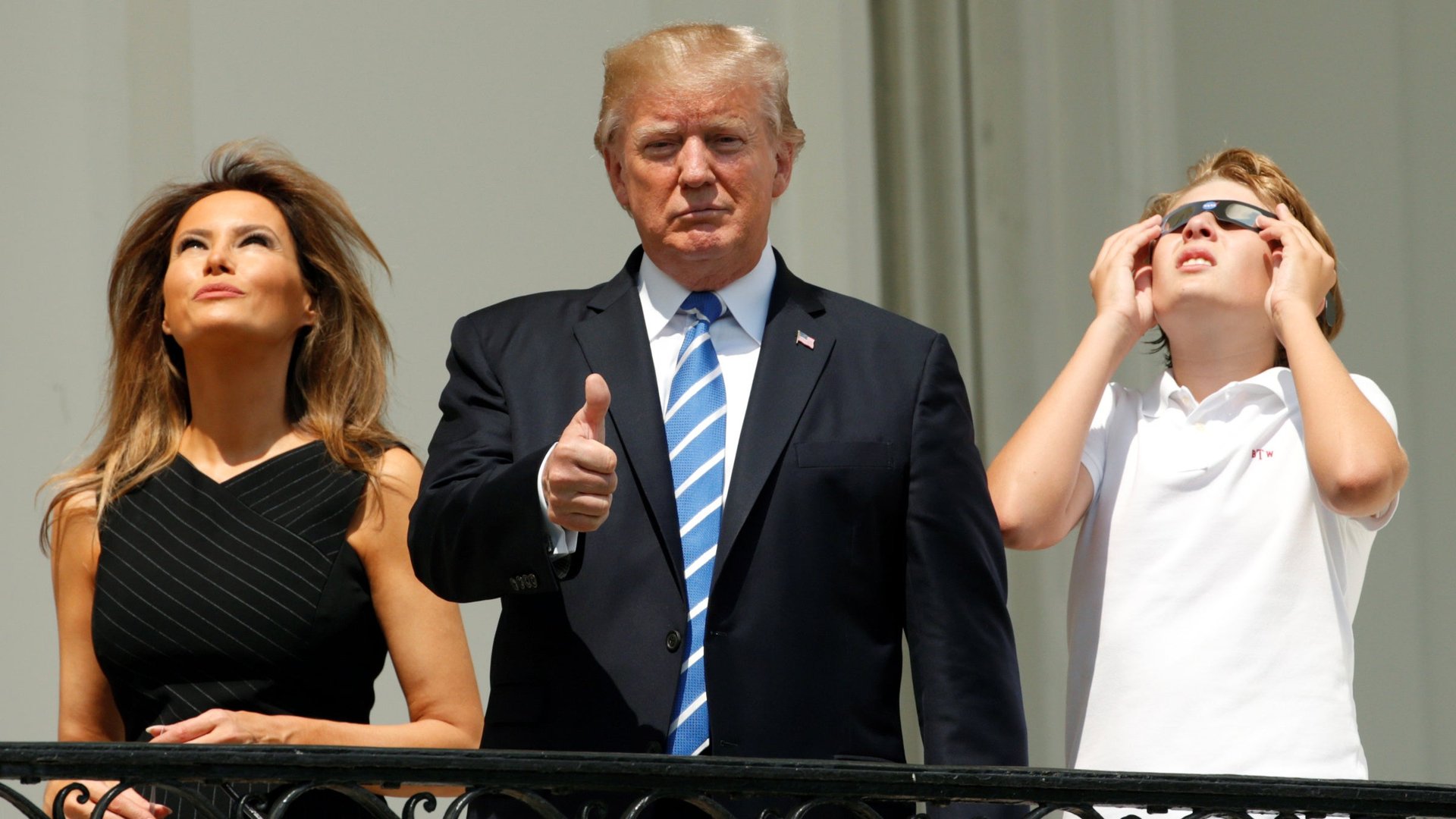The Republican tax bill would save Donald Trump and his family millions of dollars
How exactly does the tax bill that US Republicans unveiled yesterday benefit wealthy Americans more than the rest? Let’s use a prototypical example: America’s plutocrat president, Donald Trump.


How exactly does the tax bill that US Republicans unveiled yesterday benefit wealthy Americans more than the rest? Let’s use a prototypical example: America’s plutocrat president, Donald Trump.
Unlike recent presidents, Trump has refused to make his tax returns public, but one summary return from 2005 (pdf) was leaked to MSNBC. It gives us a sense of how much a person who earned $150 million in a year might benefit from the bill.
- It gets rid of the alternate minimum tax. The AMT, as it is known, was designed to prevent rich people from dodging taxes by abusing creative accounting. If your tax after deductions is below a certain amount, you pay the AMT. Unfortunately, this threshold amount was not indexed to inflation, so over time more and more people have been hit by the tax, making it unpopular and forcing congress to “fix” it by updating the income brackets. This time around, however, the law eliminates the AMT entirely, at a cost of nearly $700 billion to the Treasury over the next decade. (The loopholes closed by the bill should balance this reduction out to some extent, but that effect is in turn offset by cuts in tax rates.)
Effect on Trump: In 2005, he paid $32 million under AMT, versus just $5.3 million after applying deductions. So eliminating the AMT appears to get rid of most of Trump’s tax bill. On the other hand, he’d also have fewer deductions, so his initial tax bill would be higher than that $5.3 million. But we don’t have enough information about what deductions Trump used to pay. - It privileges pass-through income. Many tax experts are worried about a proposal in the bill to tax certain business income—from sole proprietors, partnerships and real estate investments—at a rate of 25%. Currently, income from these organizations is taxed at the same rate as personal income tax; that is, it “passes through” to the individual. Most of the time, individuals pay less than 25% in tax overall—86% of pass-through income, in fact, is taxed at 25% or lower. So the beneficiaries of this change will be people who are already wealthy and who can find ways to re-classify their labor as business income. The law’s authors say they have written the bill to prevent abuses but some lawyers are skeptical. Estimated cost to the Treasury: $448 billion over 10 years.
Effect on Trump: In 2005, Trump earned $67 million in passive income, which would have been taxed at the top rate of 39.6%. Under this rubric, it would be taxed at 25%. (Most of that 2005 income was offset by Trump’s massive loss carry-forwards, which is another wrinkle entirely.) - It makes inheritance tax-free. Right now, if you inherit more than $5.5 million, you need to pay a 40% tax on the excess income. Conservatives hate this “death tax” and see it as double-taxation, since the money was (presumably) taxed when it was originally earned. Liberals argue that a person receiving more than $5 million in windfall income should be taxed as a way to reduce inequality and fund useful government programs. Regardless of the principles, one thing to keep in mind is that abolishing the estate tax won’t help many family farms, the image most often cited by the tax’s opponents. Only 50 small farms or business will pay the tax this year, and will owe less than 6% of their value, according to one analysis. The real winners are people inheriting large estates or trusts. Under this bill, the exemption will be raised to $11.4 million before the tax is eliminated entirely in 2024.
Effect on Trump: This will give Trump’s heirs a big benefit, depending on when he leaves this world. If it is after 2024, the savings could be worth $400 million or more, depending on how large his estate really is.
If it seems like we are cherry-picking provisions, well, we aren’t. These three changes, which provide big benefits to very rich people like Trump, will cost the public at large $1.3 trillion—almost the entire $1.5 trillion cost of the Republican tax reform plan. If they were eliminated, the bill would be nearly deficit-neutral and more likely to goose economic growth, since these provisions aren’t seen as having strong fiscal multipliers, compared to cuts on businesses and lower-income Americans, but do add to the debt.